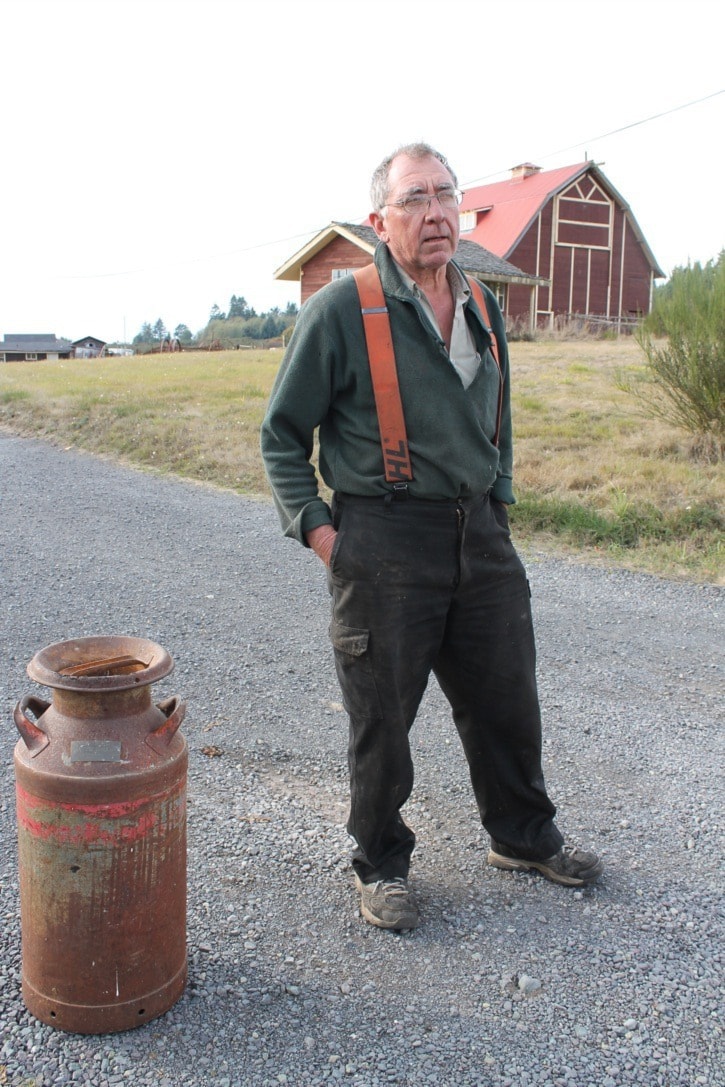Milk comes in cartons from the grocery store, and today we don’t see many fields with grazing milk cows, but it wasn’t always like this. In the 1940s and 1950s Sooke sent dozens of milk cans a day to Victoria.
The 10 gallon cans, as pictured, were described by dairy farmer Rex Kendrew in 1998, “Ten gallon cans equal 100 lbs of milk … that meant several tons of milk a day … now there’s none.” The roadsides were dotted with the steel cans, picked up each morning by Island Freight Service and hauled to the Island Farms plant in Victoria for processing.
Twice daily milking, either by hand or occasionally on larger farms by milking machine, produced the volume making up that fluid tonnage. Herds generally ranged from six cows to 30. After morning milking they were let out to pasture and returned for evening milking about four o’clock.
Some farmers had separators, a mechanism which forced the heavy cream from the milk, a process that required the strong arms of a youngster to turn a crank employing centrifugal force to divert the particles of cream. Smaller five gallon cans were used for shipping cream, which brought a premium price as a reward for the extra labour.
When the processed milk came back to Sooke from the dairy via a dairy delivery truck, it was delivered to customers in glass bottles. If you wanted three quarts left at your door, you put your three empty quart bottles out to signal the milkman.
Manure cleaned from the gutters of the cow stalls in the stables and distributed on the fields, provided nutrients to grow hay, alfalfa and feed such as mangels to carry the cows over the winter. Jersey, Holstein and Ayrshire seemed the most popular breeds.
Among the most prominent dairy farmers west of the Sooke River were Glinz/Wilford on West Coast Road, Welsh on Maple and Grant, Lunson on Helgesen, with Strong, Nissen, Cotterill, Rudd, Duncan, Kendrew in central Sooke. East of Sooke River were Milne, Martin, Jensen, Leiper and Doran. Some farmers did not ship, but had their customers pick up bottles at the farm.
The 1960s brought new methods to dairying and bulk tanks into use. By the 1980s the growth of regulations had completely altered the picture, and milk cans were seen no more.
Elida Peers,
Historian
Sooke Region Museum
